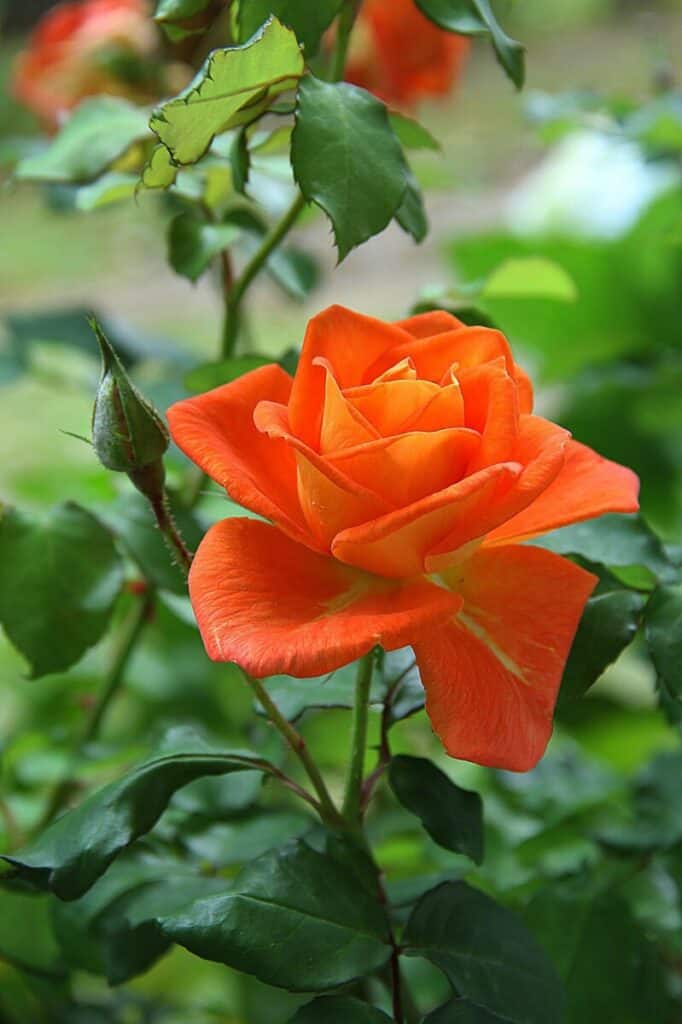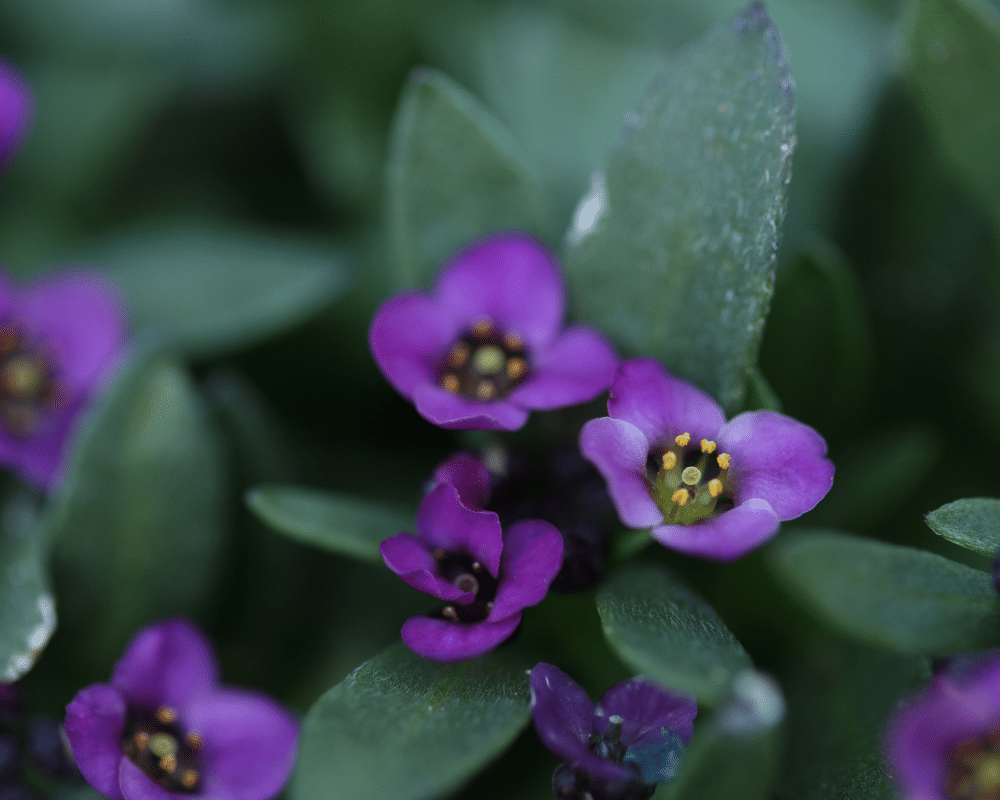And How to Use Natural Enemies
To gardeners, natural enemies are beneficial insects that are predators of nuisance insects. Hoverflies are tiny creatures that play a unique and valuable role in this process. Better still, hoverflies love Sweet Alyssum.
Honey scented, Sweet Alyssum and the little Hoverfly are remarkable collaborators in both making our garden lives easier and making agriculture professional or backyard, both more productive and sustainable.

Here Is How Beneficial Hoverflies Work
Sweet Alyssum is a creeping plant with a lovely scent and tiny, nectar-filled blossoms. We use it as an annual flower throughout a long blooming time and in gardens over a large geographical territory. Grow alyssum in beds, pots, and hanging baskets.
The Hoverfly is a tiny insect with a very specific proboscis that helps it feed on the Alyssum flower. The fly has a problem, though. The larva of the fly needs to eat too. And what it wants, is the Aphid.

You are getting it, now, aren’t you? If you grow the Sweet Alyssum near plants that are attacked by Aphids, everybody is happy. The larvae also feed on Thrips and other soft-body insects that do so much damage in our gardens.
A Little More On The Hoverfly
Hoverflies are found in just about any place in the world except for Antarctica. While harmless without sting or poison, they mimic the appearance of bees and wasps, which is a good way to ward off predators. There are about 6000 species in 200 genera.
The ones that love the sweet alyssum (and whose offspring crave the aphid) mimic the coloration of a bumblebee. Hint, you can recognize them because they are slimmer, have only 2 wings, and do not get pollen on their feet!
How Do They Hover?
There is a wonderful little David Attenborough video on YouTube. Here he shows us exactly how it works.
Enjoy The Sweet Alyssum While It Attracts Hoverflies
Even if it were not for this remarkable symbiotic relationship, Sweet Alyssum is a worthwhile plant for your garden for many reasons. It offers beauty, and scent, and is adaptable to many uses. Sweet Alyssum-Lobularia maritimum is a genus of 100-170 species of flowering plants. If you like to incorporate annuals into your garden this will take you to a post discussing many annual plants. It may give you some ideas you can use.
Where It Came From
Sweet Alyssum is native to South and Central Europe, North Africa, and parts of Asia. We have records of gardeners enjoying the plant since the 1500s. In the 1800s a yellow variety was popular and by the 20th century, the white flower we see so often became the most popular. Today, we can plant them in pink, rose, lavender, and combinations of these colors.
Popularity in a plant ensures that breeders are constantly trying to create new varieties with desirable features. You can find plants under 6″ high to over one foot. Some will trail with both blossoms and honey scent for over 5 feet. Use these in hanging baskets, tall containers and along sloping areas.
Why New Varieties
The new varieties are considered far better performers than the old ones. Even better these new varieties are vegetatively propagated. That means grown from cuttings. Therefore they ought to last longer into the summer, be more vigorous, and go to seed later in the year. You can revive them, midseason by cutting them back with sharp scissors!
For example, in South Florida where we garden, sweet alyssum is a wonderful performer for us in the cool season. New white varieties, particularly those that are sterile will last farther into our hot, wet summers. For this purpose consider varieties such as Easy Breezy or Snow Princess that are designed for heat. They are recommended by our state university in this piece.
Some Ideas For Using Them
Try some of these ideas.

- Bedding plants, in mixed borders or as warm-season ground covers
- Over plant seasonal bulbs, when the bulb flower is finished blooming there will be cover
- Trail them over walls or fences and down slopes
- They are very attractive slipping out to the edge of walkways and paths
- They are perfect trailers for containers and hanging baskets
- Companion for roses
- Fill spaces around rocks
How To Grow And Care For Sweet Alyssum
Plant in full or part sun. Check the varieties on the following table for plants most suited to your light conditions. The plants appreciate shade in the hot afternoons. Although they are amenable to a variety of soils, they do best in rich loamy soil and a neutral pH.
Pollinators and Wildlife
Sweet Alyssum is a magnet for bees, butterflies, and hummingbirds. This appeal to beneficial insects is a valuable bonus.
Deer and rabbits should find the distinctive scent to be negative. (This is a guideline, never make promises about deer and rabbits!)
Water and Fertilizer
Ensure that the plant has a minimum of one inch of water per week. Container-grown plants will require a regular application of water-soluble fertilizer and more water than plants in the ground.
Summer Management
Most sweet alyssum tends to be at their weakest in mid-summer. Trim them back to encourage a second bloom. If you have a hot, humid climate seek out heat-tolerant varieties. If your summers are short look for hardy varieties.
Pests and Diseases
Sweet Alyssum has few problems but is attacked by blight when in overly wet conditions. Botrytis Blight is caused by a fungus. You can spot it if the flowers turn brown starting with the inner flowers, not from the outside which is normal aging.
Botrytis Blight is best dealt with by good sanitation. Remove damaged plants or parts, pick up litter, and disinfect pruners with a solution of 10% household bleach.
Varieties of Sweet Alyssum to Consider

Look for the names of plants that might work in your garden. They are listed in alphabetical order with their colors and features.
I am compiling lists from all the sources available. My goal is to create a full and useful resource.
| Name of Variety | Color | Features |
| Aphrodite series | var including yellow | colors are unique, apricot, salmon, lemon, red |
| Blushing Princess | Blush lavender | Part sun/sun, heat tolerant |
| Carpet of Snow | White | 4″T, for Cool climates |
| Clear Crystal Lavender Shades | Lavender | 10-14″T-very vigorous |
| Easter Basket, series | Violet, Rose, Pink | early blooming, mounding shape |
| Easter Bonnet series | Pale pink, lavender, white, yellow | bred for hanging baskets, lasts long in the season, sharp scent |
| Frosty Knight | White | Cream edge to the green foliage |
| Golf Series | White, pink, purple | Compact, small gray/green leaves |
| Little Dorrit | Var | small 1″ leaves, sharp honey scent, bloom mid-spring to fall |
| Navy Blue | Dark Aqua | 4″, Very hardy strong scent & bright color attract birds, ladybugs, and other wildlife |
| New Carpet of Snow | White | Small, 3″, resilient to harsh conditions and can be started indoors at an early date |
| Oriental Nights | Purple, lilac | strong smell, hardy-popular in the balcony and hanging baskets where scent adds to the effect |
| Rosy O’Day | Rose, fresh pink and white | Compact, 4″, attractive to beneficial insects |
| Royal Carpet | Purple | 2-4′ Ground cover |
| Snow Crystal | White, fragrant, extra-large flower | vigorous, easy to grow, mound shape |
| Snow Drift | Bright white | Low, spreading habit, summer bloom |
| Snow Princess | White, large flowers | 6″ but long trailing, to 5′ |
| Sweet White | White | 6″ edible |
| Tiny Tim | White, delicate | 3″ dwarf, fast germination, blooms all summer, honey scent |
| Trailing Rosy Red | Rose | Long trailing plants, for hanging baskets |
| Violet Queen- | Lilac | Low growing, fast-spreading, accept lower light and some drought |
| Wonderland series | White, pink, purple | Compact 3-6″ |
| Wonderland Copper | Various, dark colors best in part shade | 4″ low growing ground cover, profuse small 4 petaled flowers |
| Wonderland White | White | small, bright star-shaped flowers, low maintenance |
| YOLO Top White | White | spreads/trails to 24″ |
Plants that Benefit From Nearby Sweet Alyssum
Use Alyssum near any plant that has been troubled by Aphids. Roses Lobelia, Geranium, Heliotrope, and Gardenias will benefit. Vegetables and herbs are easily interplanted with the tiny Alyssum blossoms. Try them with tomatoes, peas, spinach, lettuce, and herbs.
Commercial Lettuce Growing Using Sweet Alyssum
I found this remarkable video of a research project that used Sweet Alyssum to control the serious problem of Aphids which destroy the Lettuce crop. It was made by a USDA research scientist and is a professional application of problem-solving we would all like in our gardens.
Try it, it is an impressive depiction of sustainable agriculture.
Summary
Sweet Alyssum is a plant that we have used in our gardens for a long time. We will keep using it, but not just for aesthetics. As more of us learn to use Integrated Pest Management and use other methods of controlling pests and diseases before chemicals we will appreciate what this little plant can do for us.
We have plenty of reasons to utilize Sweet Alyssum.
This link will take you to a university research-based discussion of Integrated Pest Management. It is written by scientists at The University of Florida. It is a useful start wherever you garden. Also, try the website of your state agricultural university. It should be oriented toward the particular pests and diseases local to your area.
Other Hoverfly Attracting Plants
If you would like to attract plenty of hoverflies try also adding oregano or garlic chive to your herb collection. Also, include bachelor buttons or buckwheat.
Encouraging hoverflies is well worth doing. An established population of hoverflies can control most of an aphid attack alone, by removing 70-80% of the aphids.
